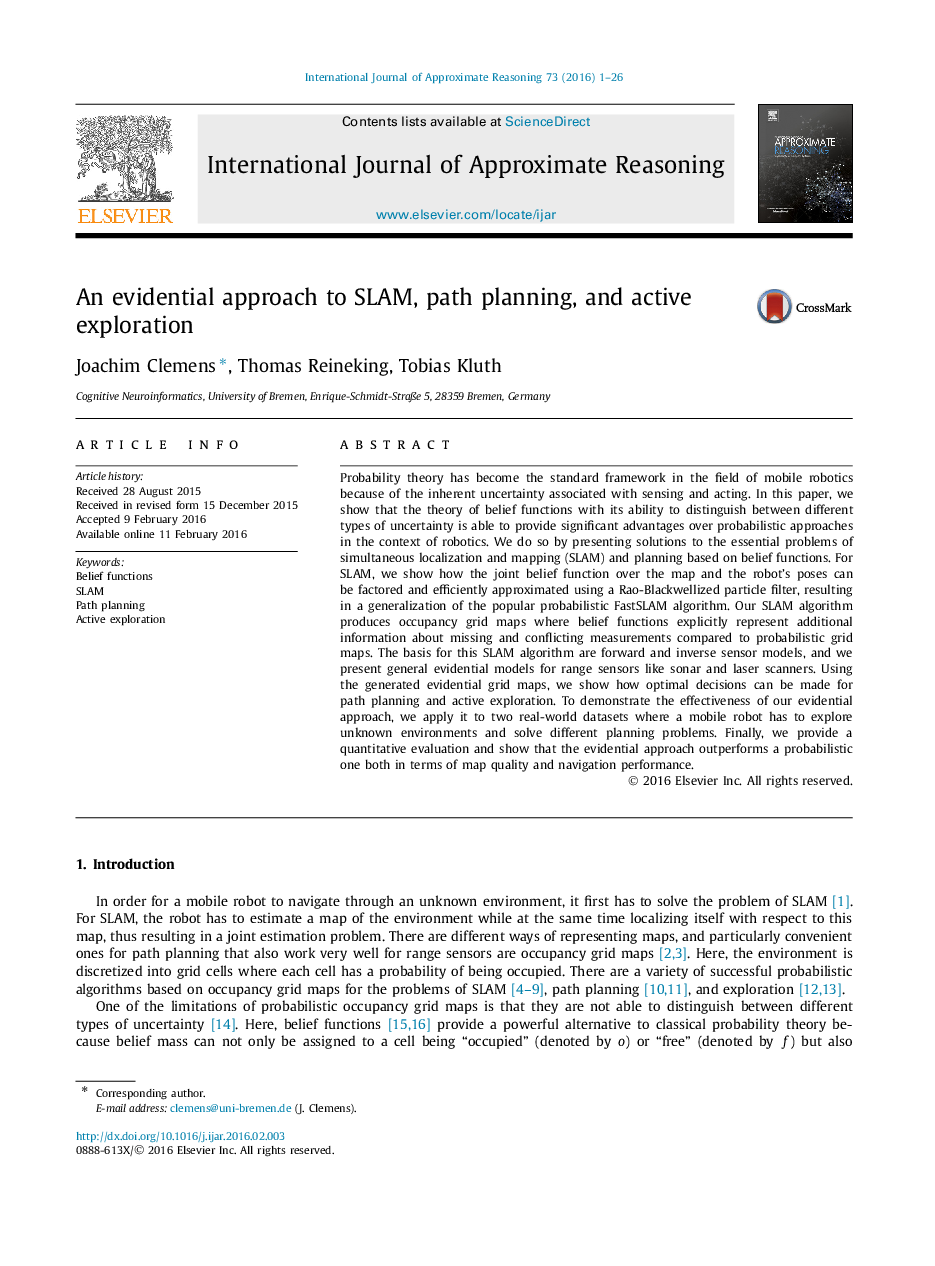| کد مقاله | کد نشریه | سال انتشار | مقاله انگلیسی | نسخه تمام متن |
|---|---|---|---|---|
| 397855 | 1438431 | 2016 | 26 صفحه PDF | دانلود رایگان |

• A belief-function-based approach to SLAM for mobile robots is presented.
• Different types of uncertainty are explicitly represented in evidential grid maps.
• Optimal navigation and exploration based on evidential grid maps is shown.
• Evidential forward and inverse models for range sensors are provided.
• The approach is evaluated using real-world datasets recorded by a mobile robot.
Probability theory has become the standard framework in the field of mobile robotics because of the inherent uncertainty associated with sensing and acting. In this paper, we show that the theory of belief functions with its ability to distinguish between different types of uncertainty is able to provide significant advantages over probabilistic approaches in the context of robotics. We do so by presenting solutions to the essential problems of simultaneous localization and mapping (SLAM) and planning based on belief functions. For SLAM, we show how the joint belief function over the map and the robot's poses can be factored and efficiently approximated using a Rao-Blackwellized particle filter, resulting in a generalization of the popular probabilistic FastSLAM algorithm. Our SLAM algorithm produces occupancy grid maps where belief functions explicitly represent additional information about missing and conflicting measurements compared to probabilistic grid maps. The basis for this SLAM algorithm are forward and inverse sensor models, and we present general evidential models for range sensors like sonar and laser scanners. Using the generated evidential grid maps, we show how optimal decisions can be made for path planning and active exploration. To demonstrate the effectiveness of our evidential approach, we apply it to two real-world datasets where a mobile robot has to explore unknown environments and solve different planning problems. Finally, we provide a quantitative evaluation and show that the evidential approach outperforms a probabilistic one both in terms of map quality and navigation performance.
Journal: International Journal of Approximate Reasoning - Volume 73, June 2016, Pages 1–26